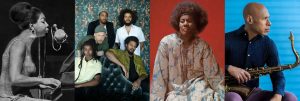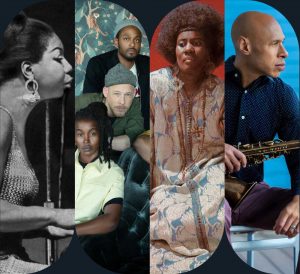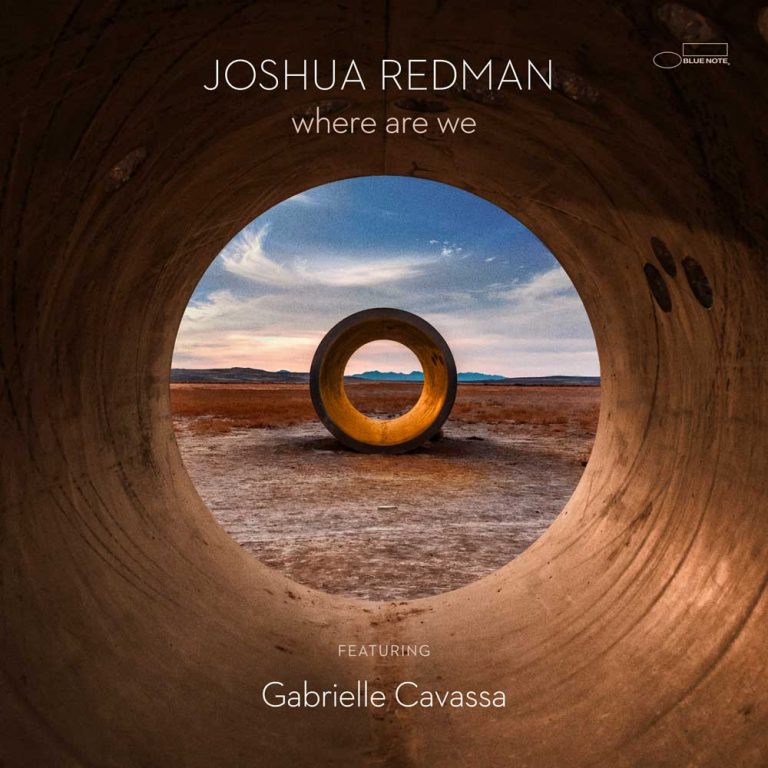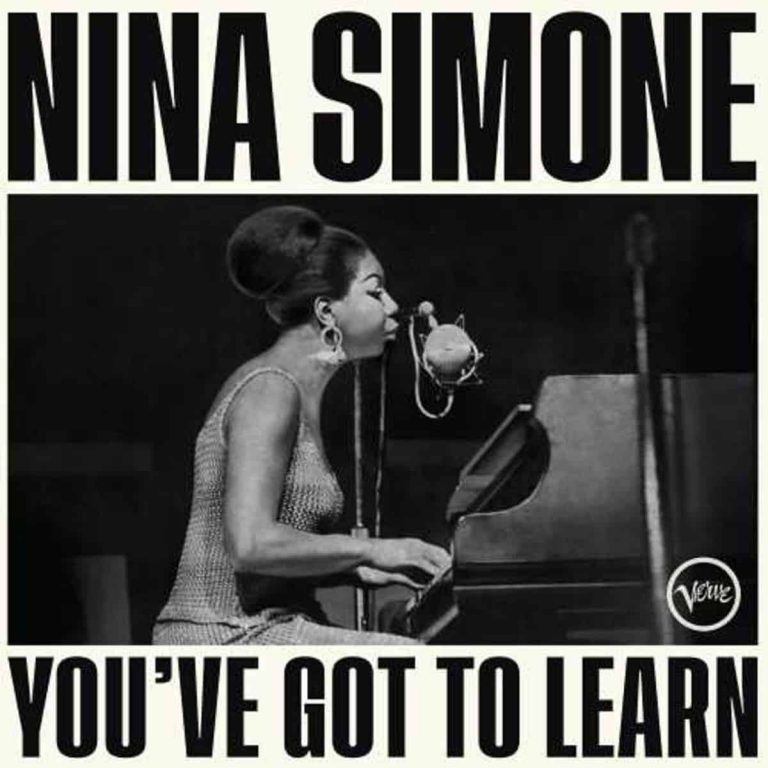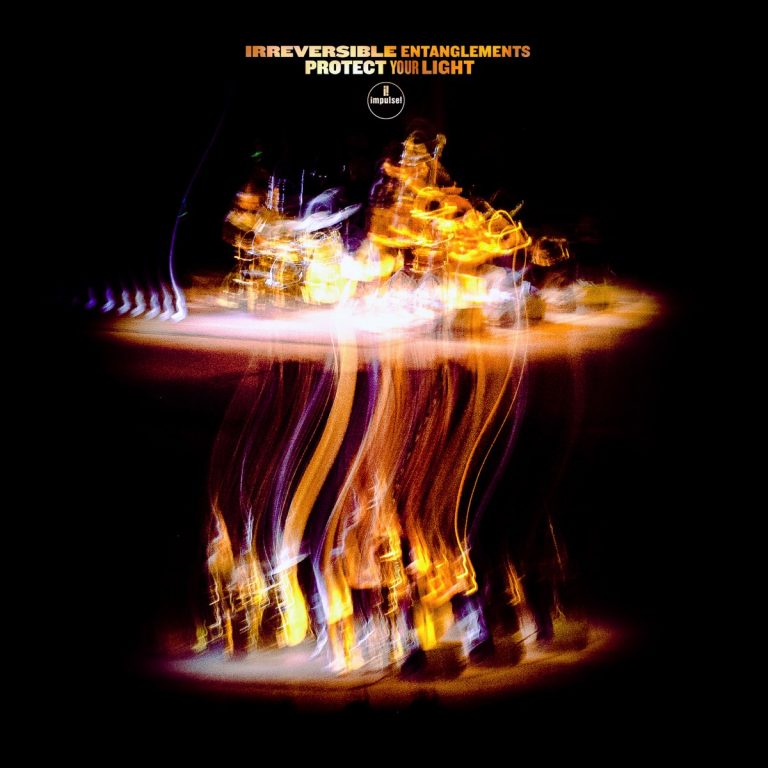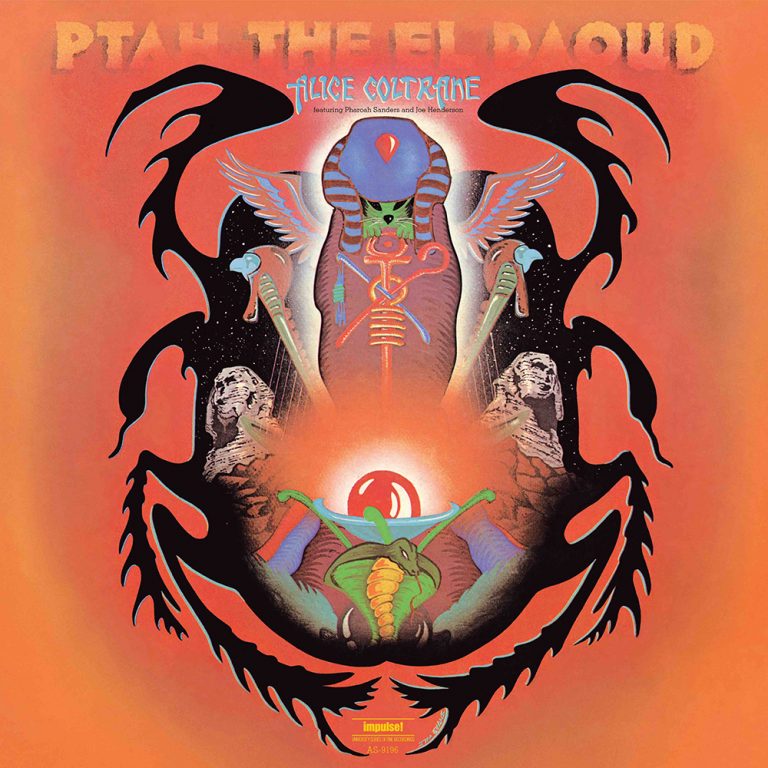Kevin Le Gendre: Joshua Redman’s “where are we” (Blue Note)

The history of ‘deps’ in jazz is long to say the least. Just about every significant band in every decade had a gig in which an original member was replaced for sundry reasons. If the incomer played to the same standard as the outgoer, there was no drop in performance. But there is perhaps a bigger point here. A leader of substance will still drive their artistic vehicle to the creative high ground, and the material can be the precious fuel for the journey.
When saxophonist Joshua Reman walked his group on to the Barbican stage at this year’s London Jazz Festival, a few audience members may have frowned at the absence of drummer Brian Blade and pianist Aaron Parks, two key contributors to the album “where are we”. Yet their respective counterparts, Nazir Ebo and Paul Cornish, were excellent. Tellingly, the other pivotal part of the studio session, singer Gabrielle Cavassa, was present, and together the quintet negotiated the repertoire with consummate skill.
To a great extent the concert highlighted both the essential chemistry between the two front-liners in the band as well as the strength of the set list. It was a reminder of why the album hits home the way it does. There is the saxophonist, the singer, and the songs. In a word, the melodies. Redman, who has covered a substantial amount of stylistic ground since his debut in the early 1990s, sounds particularly expressive on pieces that bridge the gap between Great American songbook classics, modern jazz and pop, while Cavassa’s finely crafted blend of understatement and emphasis makes the words as well as themes memorable. With the vibraphone of Joel Ross adding another crystalline, often deeply poignant resonance to the ensemble sound, the recording is emotionally charged. But there is also an intellectual depth to consider. The astute segue of “Stars Fell On Alabama” and “Alabama” brings the eternal romanticism of Perkins-Parish and the timeless political verve of John Coltrane into conversation, juxtaposing the wonder of being in love and the horror of the extreme racist violence that claimed the live of four black children at the height of the Civil Rights movement. The latter can affect perceptions of the former, giving bitter irony to the locale of Alabama, and whether it evokes the ‘heavenly situation’ of sweethearts or the hellish depredations of the Ku Klux Klan.
The decision to start the sequence as a saxophone-voice duet, with Redman and Cavassa converging and diverging against the most gentle of pulses, implying tension as well as intimacy, before it progresses to the band at its most spirited and spiritual, is a wise one. These songs come late in the LP’s running order, after anthems such as “Chicago Blues”, “Baltimore” and “By The Time I Get To Phoenix”. They all flow from the album’s central concept of notable American cities, but the net result, rather than being a tourist brochure trek across the land of the free and the home of the brave, is a reminder of how many questions can be asked on society and humanity en route. Indeed rather than where we go the paramount inquiry really is where are we.
Kevin Le Gendre is a London-based journalist and broadcaster with a special interest in black music. He contributes to Jazzwise, The Guardian and BBC Radio 3. His latest book is “Hear My Train A Comin’: The Songs Of JImi Hendrix”.
Sharonne Cohen: Nina Simone’s “You’ve Got To Learn” (Verve)

This historic, powerful and poignant set by the iconic Nina Simone, recorded live at the Newport Jazz Festival in the summer of 1966, was waiting to be heard in its entirety for over half a century. Donated to the Library of Congress by the festival’s founder, George Wein, it was finally released in 2023 as part of a year-long celebration marking Simone’s 90th birthday.
The soul-stirring six-song set delves into a range of human emotions, from the profound anguish of lost love on the title track, to the anger and despair of “Mississippi Goddam,” one of Simone’s most legendary protest anthems. Strength and vulnerability, fury and profound love – it’s all here, in Simone’s uniquely compelling way.
The opening title track, first appearing on “I Put a Spell on You” (1965) with strings and backup vocals, is stripped down here, stark and intensely melancholy; it is her remedy for a soul crushed by the pain of a broken heart, doing its best to subdue the anguish as it heals, while acknowledging: “You’ve got to learn to leave the table / When love’s no longer being served.”
On “I Loves You, Porgy,” her first hit single, Simone accompanies herself on a tender, hushed first verse before her bandmates come in. “And now we’re going to do a gutbucket blues,” she says as she introduces “Blues for Mama,” setting the scene. “There’s an old porch, and there’s an old man, and there’s a beat-up guitar and a broken bottle… and he’s composing his tune on a hot afternoon.” She performs “Be My Husband” a cappella, a hi-hat the only instrument. “It’s nice out here in this wind,” she muses in between verses, giving us a taste of what it was like in Newport that day.
Simone closes the set with an arresting rendition of “Mississippi Goddam,” her first Civil Rights anthem. Composed in less than an hour “in a rush of fury, hatred and determination,” it is her outraged, frustrated response to the assassination of Medgar Evers in Jackson, Mississippi, and the bombing of the 16th Street Baptist Church in Birmingham, Alabama, in 1963.
Simone offers a delivery that is unique to this performance, offered only weeks after she headlined “Stars Salute the Mississippi March” in Jackson, honoring the three-week March Against Fear. “Watts has made me lose my rest,” she sings, adapting the lyrics to mention the Watts Uprising of the previous summer, reminding listeners of the violence spreading across the nation, and asking, simply, for equality. There is palpable rage in this performance; you can hear how “Alabama’s gotten me so upset.” And there is also a sense of displacement, disillusionment and despair; “I don’t belong here, I don’t belong there / I’ve even stopped believing in prayer.” Yet there seemed to be more fatigue and hurt than rage in Ms. Simone that summer night. This protest song became a love song “for those lost and those fighting,” as Shana L. Redmond writes in the liner notes.
Ms. Simone graces the adoring audience with an encore, offering the first-ever recording of “Music for Lovers,” and returning, with great tenderness, to love: “When the whole world discovers / That love’s the only thing worthwhile / Then there’ll be music for everyone / And the whole world will smile.”
Makes you wish you could still experience Nina Simone in concert.
Sharonne Cohen is a Montreal-based writer, editor and photographer. Passionate about arts and culture, she has been a music journalist since 2001, contributing to publications including Downbeat, Jazz Times and Okayplayer.
Julian Brimmers: Irreversible Entanglements’ “Protect Your Light” (Impulse!)

Irreversible Entanglements create protest music in the purest sense – ethically, aesthetically, historically.
Comprised of Camae Ayewa alias Moor Mother – who may just be the most prolific all-round artist of our time – alongside Aquiles Navarro (trumpet), Luke Stewart (bass), Keir Neuringer (saxophone) and Tcheser Holmes (drums), the band is a supergroup of modern jazz radicals. The individual members famously first got together at an impromptu session against police brutality, in the wake of the killing of Akai Gurley in 2015. The fighting spirit of their origin story has carried them through four full-length albums and countless live performances of their Fire Music 3.0.
With their tireless work ethics and touring schedule, crossover success has long been lingering for IE. So when it was announced that they would sign with Impulse!, it felt simultaneously like a big deal and something that was inevitably bound to happen.
On “Protect Your Light” everything is familiar yet refined. Ayewa’s vocals are granted a bit more room to explore the gentler aspects of her voice. The arrangements appear to be more pre-meditated (but by no means less free) than their earlier recordings, and the production sounds more spacious altogether. It’s a fitting sonic aesthetic for anyone who’s ever had a chance to see them live, as they continuously leave audiences baffled over how huge a sound they create with just five people.
On this foundation, the album excels in all registers: From the unexpectedly catchy, danceable first singles “Free Love” and “Sunshine”, to the politically charged mid-tempo noir of “Our Land Back” and the touching “root <=> branch“, which, with its steadily evolving groove and repetitive “We can all be free” chants, serves as an invocation of the band’s recently deceased friend, the trumpeter Jaimie Branch.
Arguably the biggest achievement – and surprise – of the record comes with the closer, “Degrees of Freedom”, a dynamic, seven-minute symphony that moves from an intense start to an unusually elegiac second part that feels almost romantic in its longing lyricism over a melancholic, slowly but sternly marching beat and towering brass, all building to proper stadium-jazz momentum.
“Protect Your Light” is the most logical way forward for a band that so clearly expands on the freest and most urgent aspects of the avant-garde jazz trajectory… and a much needed reminder that every fight is fought best from a place of reflection, and a soul at ease.
Julian Brimmers is a Cologne-based culture journalist, translator, filmmaker and podcast host. Bylines in The Paris Review, Die Zeit, Spiegel Online, and The Creative Independent. He co-directed the music documentary “We Almost Lost Bochum” (2020).
Randall Roberts: Alice Coltrane’s “Ptah The El Daoud” (Verve By Request)

Those captivated by the enchanting transcendence of Alice Coltrane’s worship music on the harp and synth should make room for her equally remarkable work on her primary instrument, the piano. A virtuoso with fingers that blur across the keyboard with nimble grace, Coltrane, on her third solo album, “Ptah, the El Daoud,” delivers dazzling piano runs on three of the four self-penned pieces, reserving her focus on the harp for the luxurious “Blue Nile.” There, the instrument seems to cascade over the music, adding a layer of shimmer and shine.
Coltrane and her band drive the quartet of modal post-bop pieces on the album with foundational melodic themes that are both sticky and accomplished. To describe her work on “Ptah” as merely accomplished, though, barely captures Coltrane’s mastery. This is a player, after all, who honed her skills under the great bebop pianist Bud Powell and so profoundly impressed her husband, John Coltrane, that after McCoy Tyner’s departure from his quartet in 1966, the tenor player opted to enlist his wife. Alice’s innovative ideas propelled John’s final albums into profound and unexplored directions.
Doubters need only drop the needle on the final six minutes of “Ptah, the El Daoud” album closer “Mantra” to appreciate her harmonic knowledge, technique, and stylistic virtuosity on the keyboard. She infuses her solo with elements of Indian classical music, a discipline she studied extensively, and seamlessly incorporates the blues and gospel music of her Detroit upbringing.
After John succumbed to liver cancer in 1967, Alice found herself a single mother grappling with existential questions. Her first two albums, “A Monastic Trio” (1968) and “Huntington Ashram Monastery” (1969), introduced listeners to her interest in confluence and spirituality. Coltrane recorded these albums at her home studio in Dix Hills, New York. The Long Island residence, purchased by the Coltranes in 1964, served as a home where she raised her four children (three with John), and it’s also where John took his last breath.
Also recorded at Dix Hills, “Ptah The El Daoud” features the dueling tenor saxophonists Pharoah Sanders and Joe Henderson, who move through brass lines with a loose synchrony. Playing “behind horns,” as she termed it, “was an important experience because it added a new dimension for me,” she shared with Leonard Feather in the liner notes.
Recorded in hard-panned stereo, listeners can follow each tenor player’s path through Coltrane’s compositions, with Sanders in the right channel and Henderson in the left. (Coltrane described Henderson as “more on the intellectual side,” and Sanders as “more abstract, more transcendental.”) She, along with bassist Ron Carter and drummer Ben Riley, expertly guides the dynamic center, under the precise production of Ed Michel, who also manned the boards for Ahmad Jamal’s “The Awakening.”
“My meaning here was to express and bring out a feeling of purification,” Coltrane said of creating “Ptah, the El Daoud.” “Sometimes on Earth, we don’t have to wait for death to go through a sort of purging, a purification.”
A year after the release of “Ptah, the El Daoud,” Coltrane unveiled her transformational album “Journey to Satchidananda.” Whether such a spiritual purging was responsible for the shift is open to interpretation. But hearing “Ptah” at the proper volume and with full attention leaves little doubt that this collective expression can cleanse psyches in need of transcendence.
Randall Roberts is a Los Angeles-based award-winning music and culture journalist, and a former music editor at the Los Angeles Times.
Header image (from left): Nina Simone. Photo: You’ve Got To Learn Album Cover. Irreversible Entanglements. Photo: Piper Ferguson. Alice Coltrane. Photo: Journey In Satchidananda Album Cover. Joshua Redman. Photo: Zack Smith.

